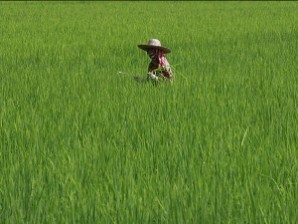
“The cost of petroleum is increasing. So it’s important to develop a new energy system that will serve as an alternative to the non-renewable, highly centralized, and not diversified system,” said Eufemio T. Rasco Jr., PhilRice executive director.
“That means utilizing local sources of energy,” such as rice straw, he said in a statement.
PhilRice recently signed an agreement with ENERTIME, a company in France, to assess the feasibility of using rice straw for power generation, which could help reduce production costs among farmers.
The Philippines produces 15.2 million tons of rice that leave behind 11.3 million tons of rice straw every year, according to PhilRice, a government-owned and –controlled corporation that aims to develop high-yielding and cost-reducing technologies for rice farmers.
“After harvest, farmers usually burn rice straw in the open field, causing air pollutants such as carbon monoxide, hydrocarbons, nitrogenoxide, and sulfur dioxide,” PhilRice said.
To minimize post-harvest wastes, the two-year collaboration will explore the possibility of collecting, transporting, and conditioning rice straw to be used as feedstock or raw material in generating electricity, it said.
The initiative is part of the project titled “Use of Rice Straw as Fuel to Generate Electricity Using Organic Rankine Cycle Technology in the Philippines.”
It will cover Nueva Ecija and Laguna, and about 10,000 tons of rice straw per year is targeted to be acquired from these major rice-producing provinces.
Under the agreement, ENERTIME, a specialist on energy production using renewable resources, will finance the feasibility study once funds are granted by the French Economic Ministry’s Fund for Studies and Private Sector Support Program.
ENERTIME will also assess the biomass supply, estimate power plant cost, and help find project investors.
PhilRice, on the other hand, will provide rice production data and technical support in collecting and transporting rice straw, contracting rice straw supply organizing site visits, and validating sites feasible for biomass energy production.
The International Rice Research Institute will lead the study on biomass supply organization and greenhouse gas mitigation analysis while the University of the Philippines-Los Baños will collect power plant site data and layout for the project.